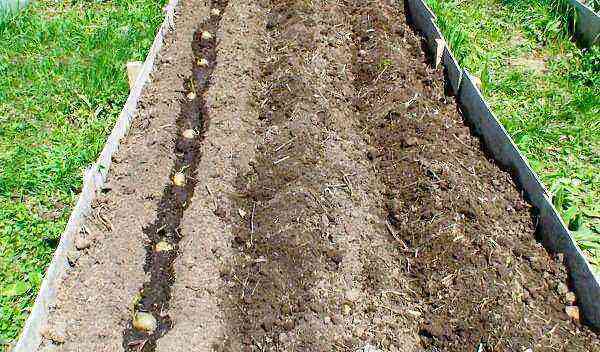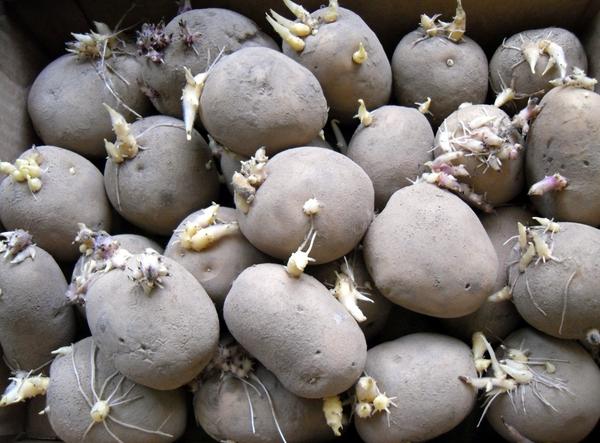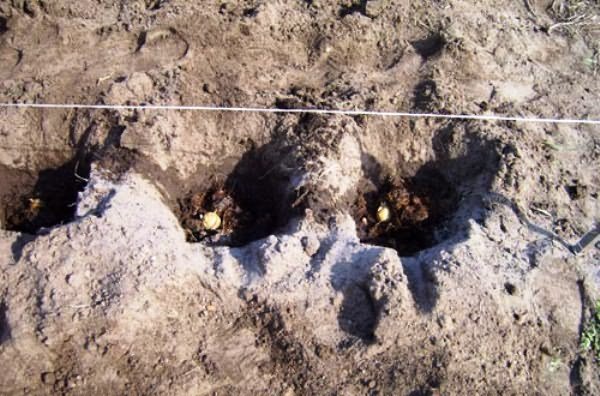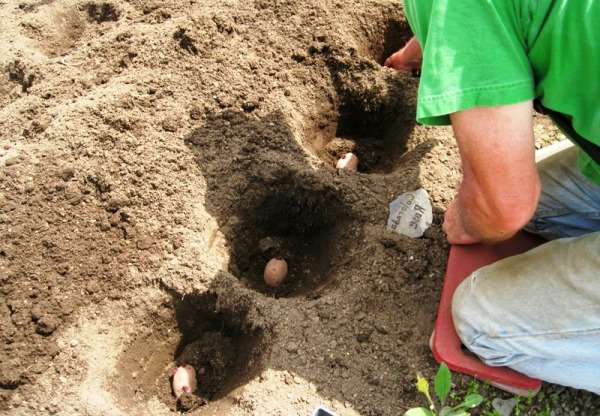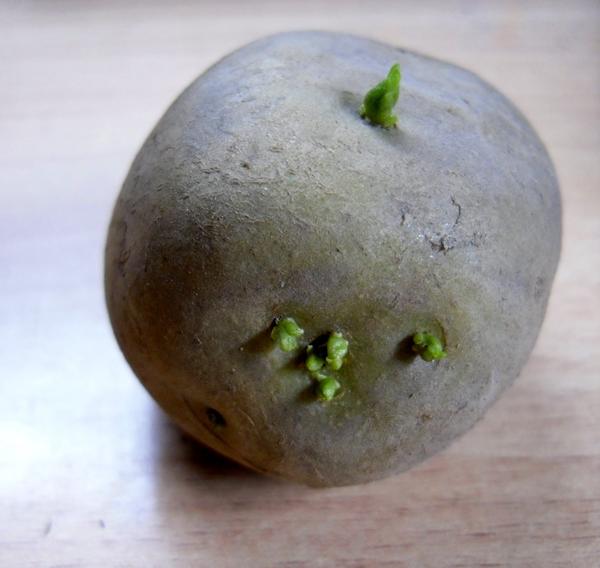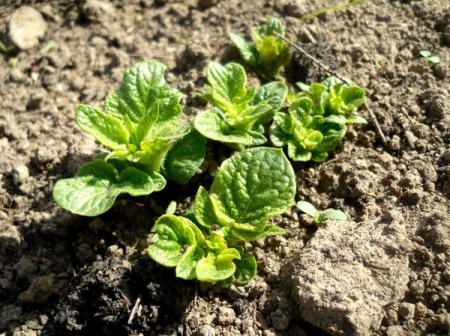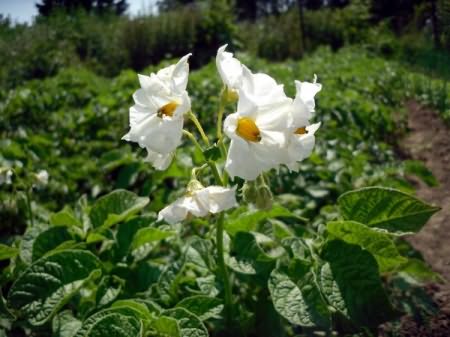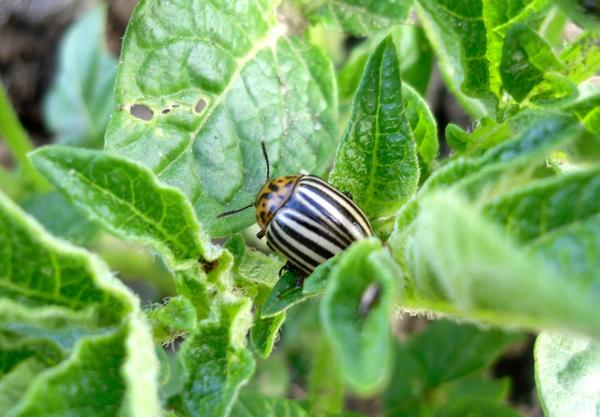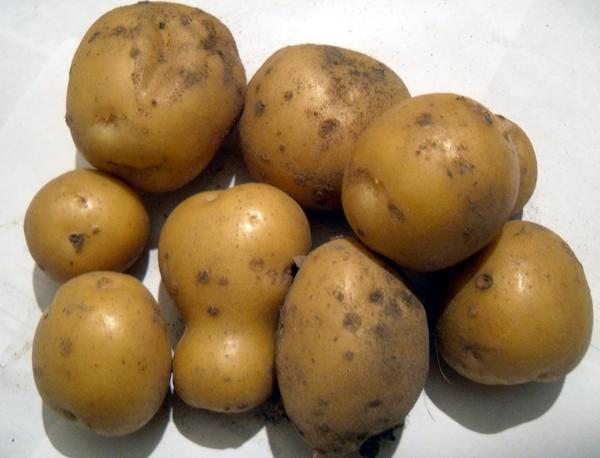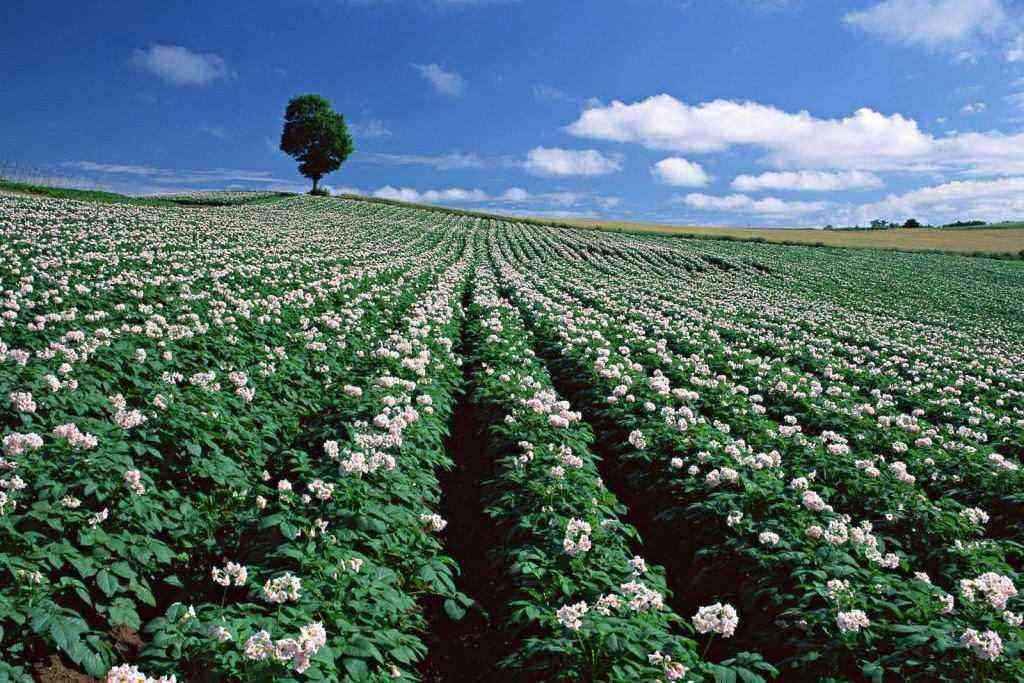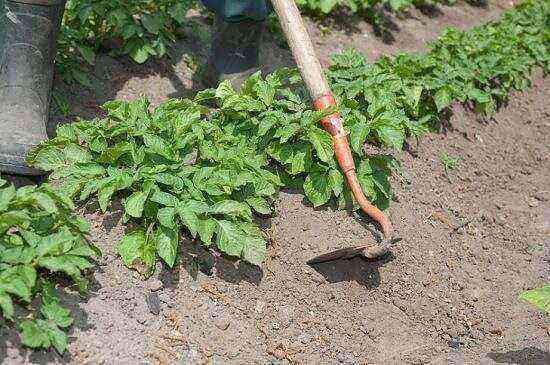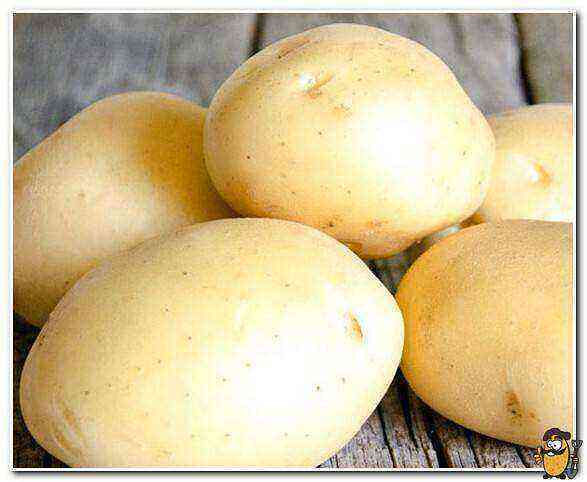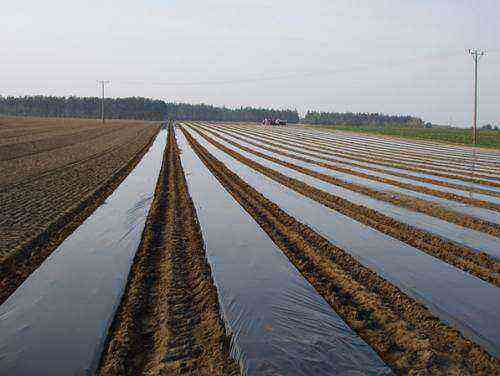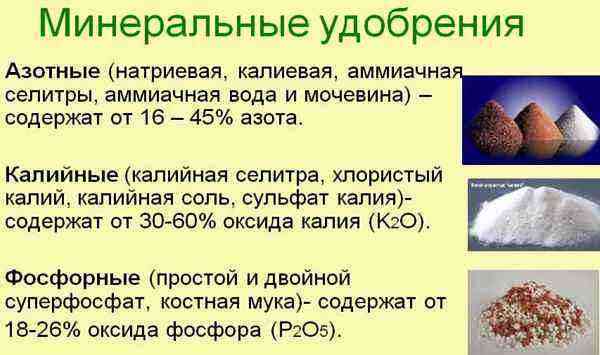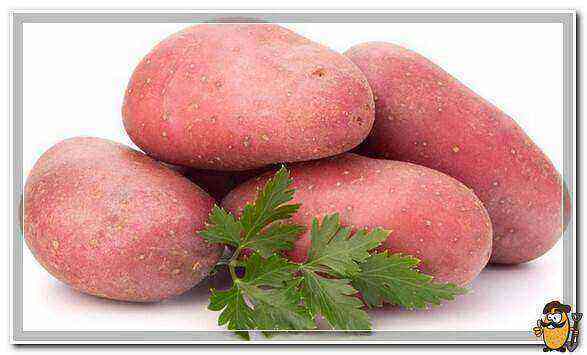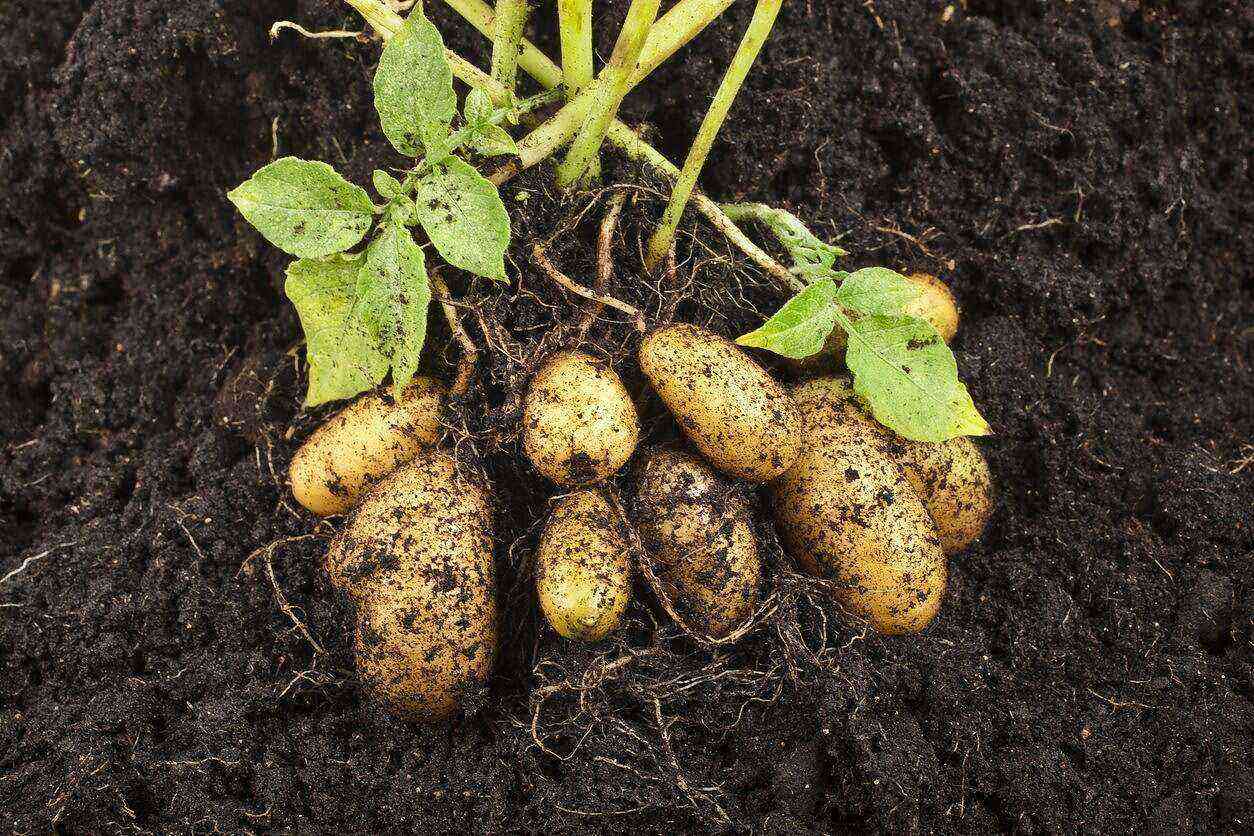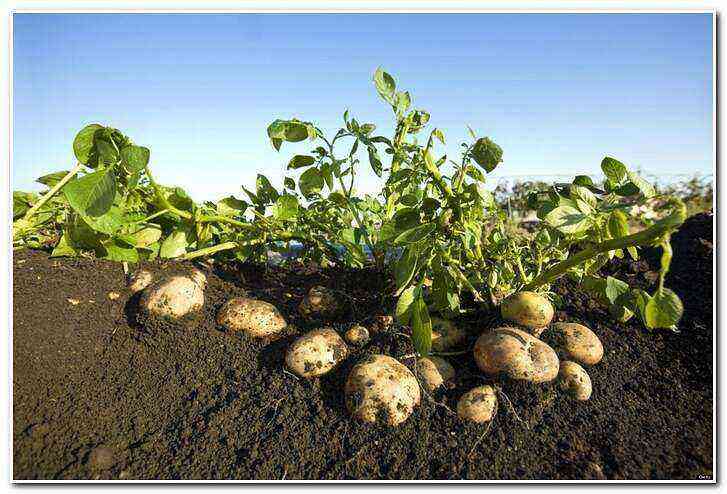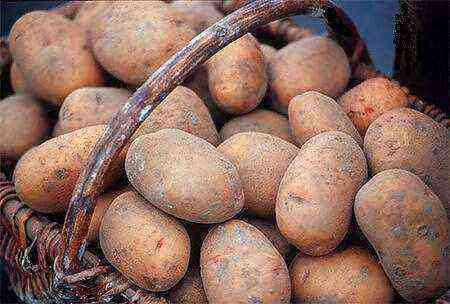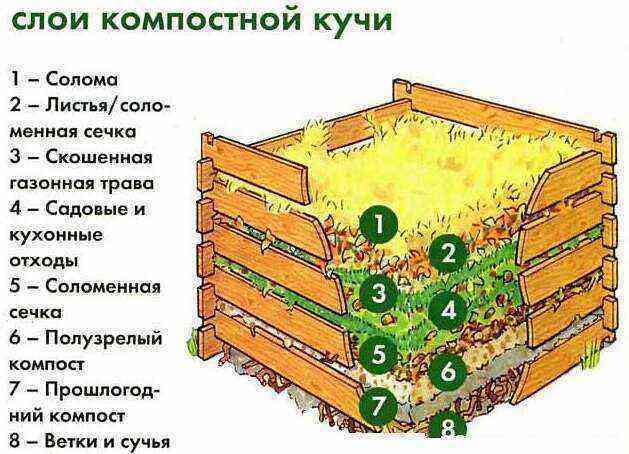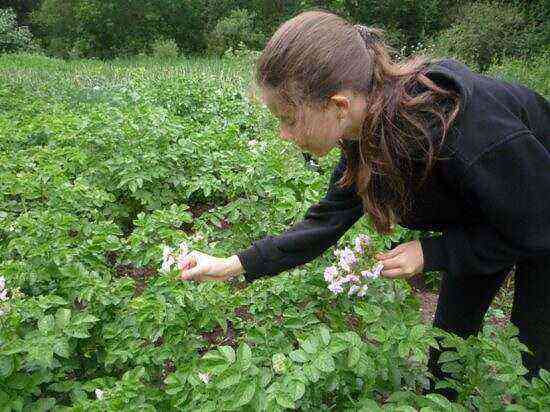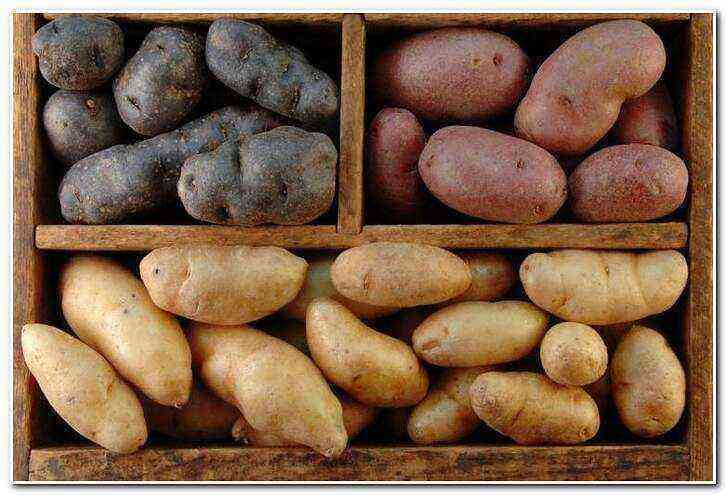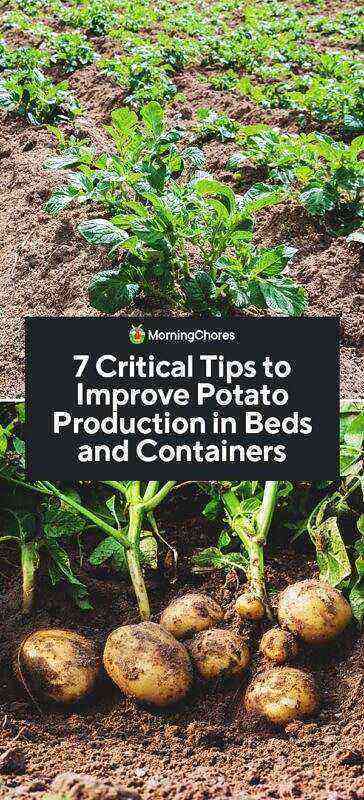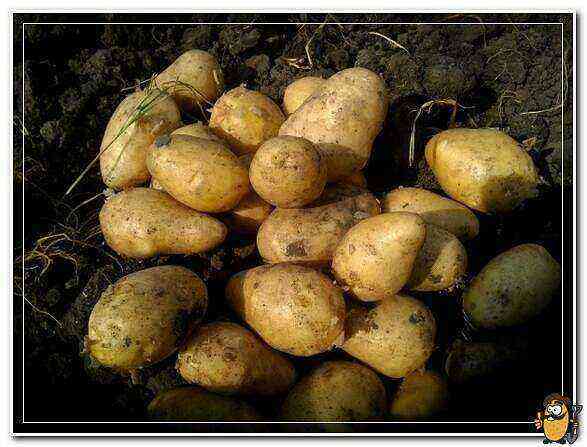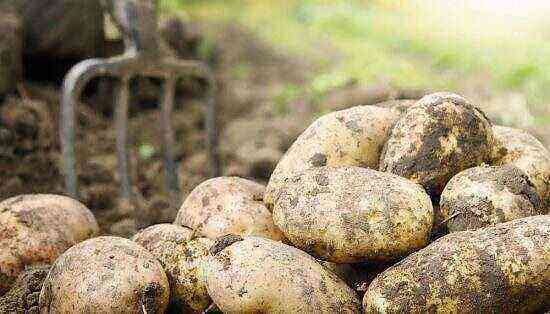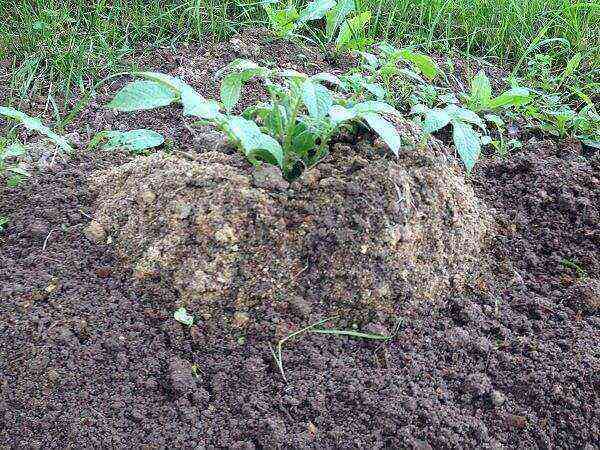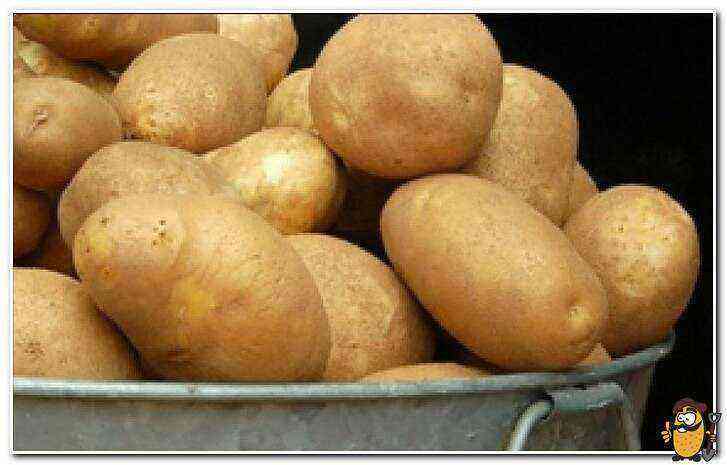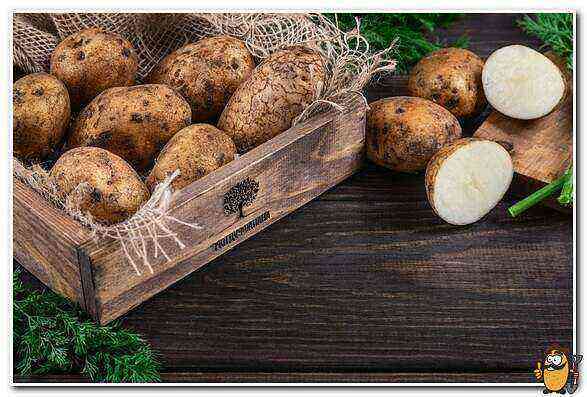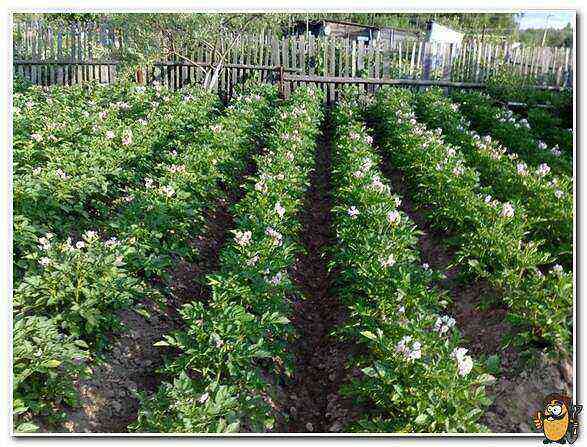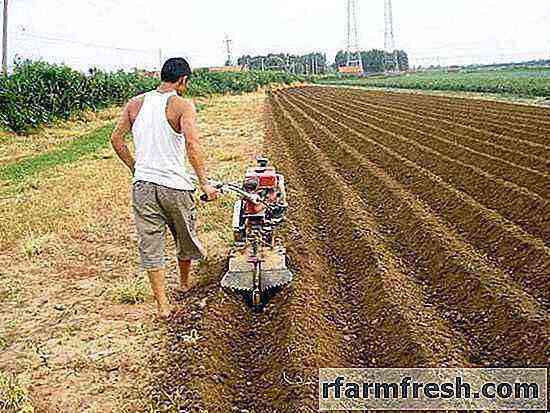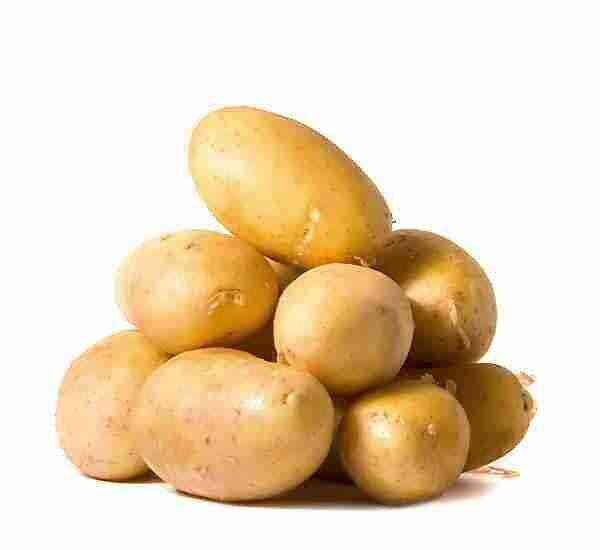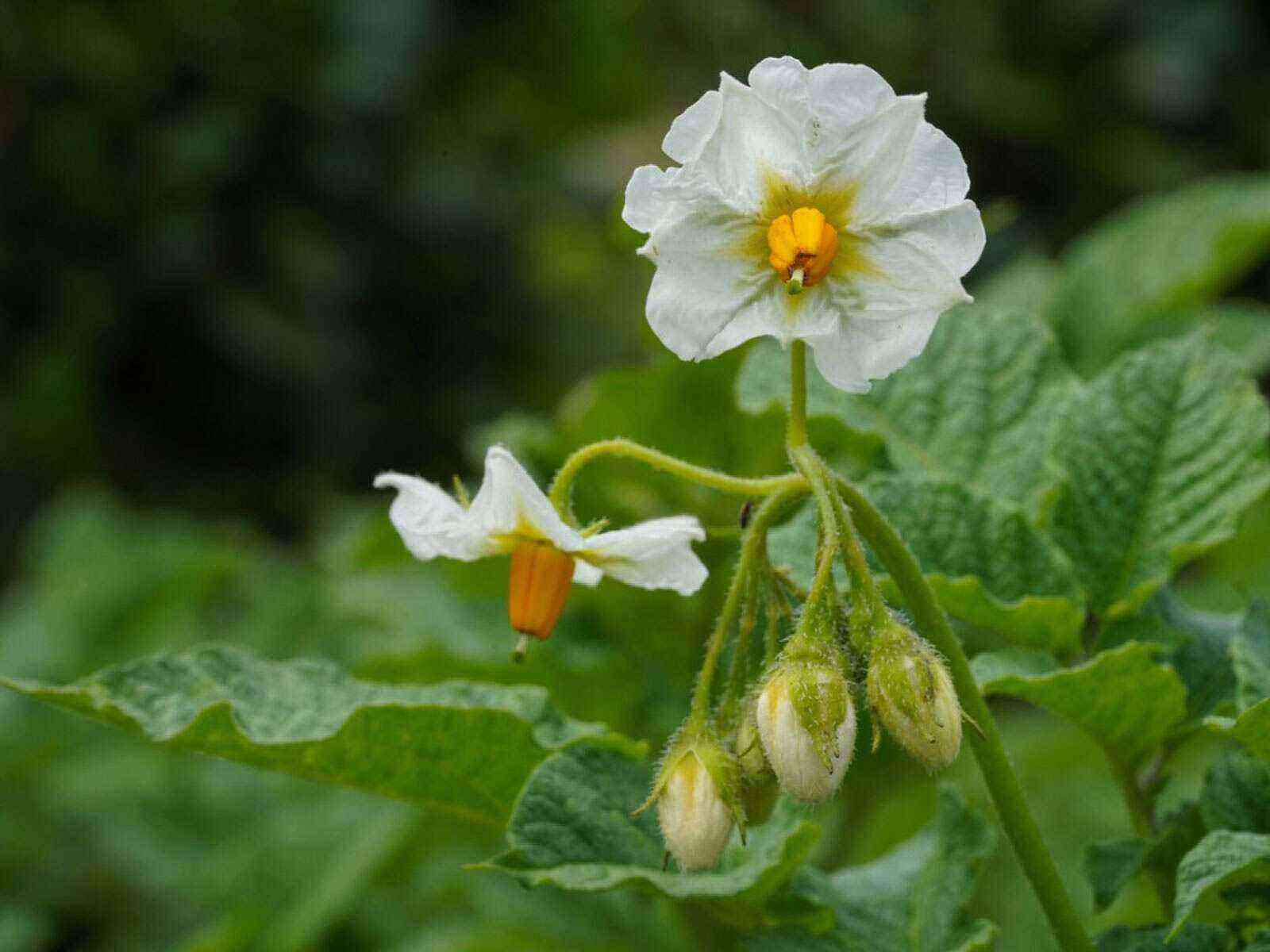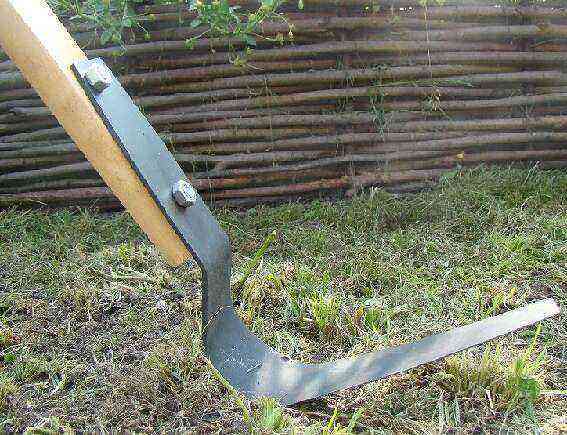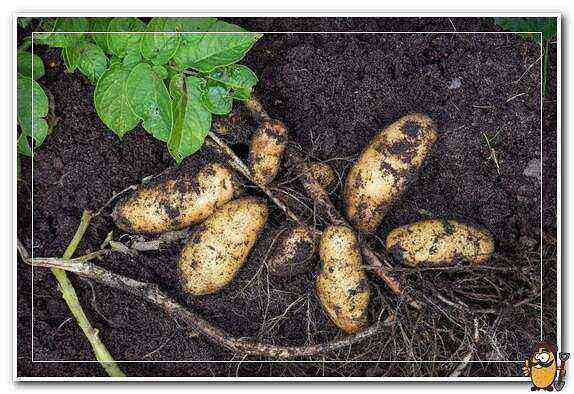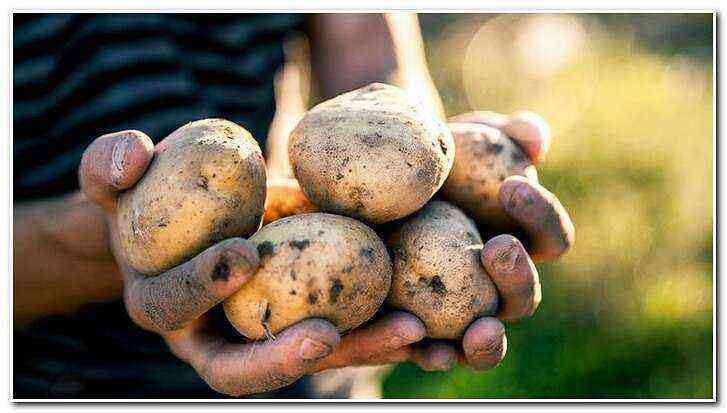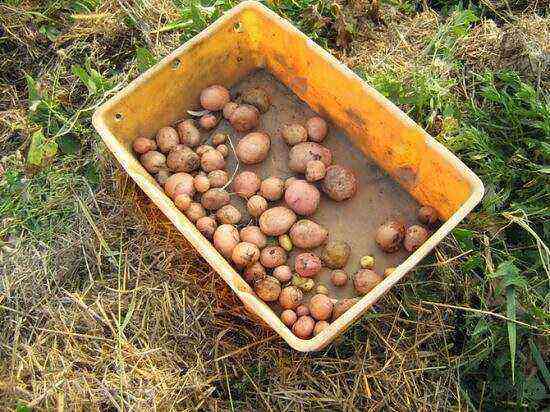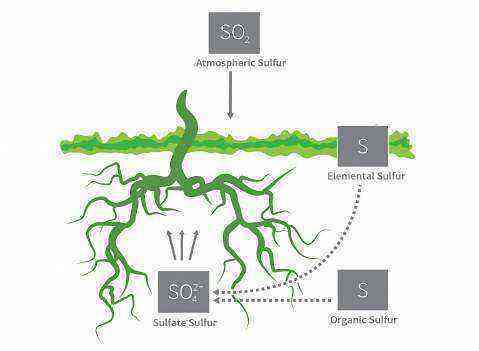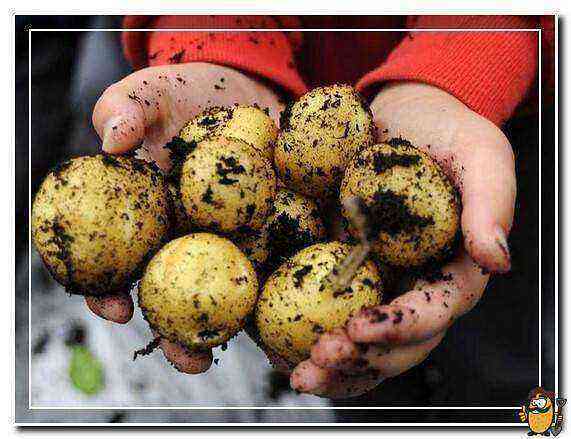Which is better to plant potatoes: chopped or whole
No matter how good and productive the variety is, it will not fully manifest itself in unsuitable soil and climatic conditions.
Prepare the seeds in the fall
In March, gardeners in the middle strip retrieve seed potatoes from storage for germination. It takes 35 to 40 days to prepare the planting material well.
How to properly cut potato tubers
Fresh manure should not be applied under potatoes – it can cause real epidemics of various diseases. Potatoes need phosphorus and potassium, but an excess of nitrogen fertilizers can reduce the yield. In the spring, the use of chlorine-containing potash fertilizers is undesirable; if the soil has not been filled in the fall, in the spring only fertilizers without chlorine are applied to the holes.
Optimal distance when planting potatoes
Unsprouted tubers wilt. 10-12 days before planting, they are poured into heaps, covered with mats or burlap and left at a temperature of 12 to 16 ° C until short shoots appear.
Row spacing
Mid-season potato varieties (ripening period after planting 80-100 days): Gatchinsky, Kameraz, Ogonyok, Stolovy 19, Yantarny, Dzhelly, Dubrava, Zhivitsa.
The yield depends on the depth of planting of potatoes. Tubers are placed at a depth of 2-3 cm, which ensures their better heating and germination. The emerging seedlings are completely covered with earth. A week later, the same operation is repeated. As a result, stolons are formed on the covered part of the stem, which increases the yield of potatoes. (planting depth – the distance from the top of the tuber to the soil surface) If the planting dates were missed, the tubers are deepened by another 2-3 cm (especially during dry periods).
Potash and phosphate fertilizers increase the resistance of potatoes to diseases. In places of distribution
Potatoes love
- Discussion of the peculiarities of growing vegetable crops
- The rows should be oriented from north to south. This will give the bushes more sunlight. Although in this situation it is possible to be guided by the capabilities of your site or garden and determine the distance by eye.
- There is no big difference in the quantity and quality of the potato crop if you use whole medium-sized tubers for planting, which have passed a full selection, or cut large potatoes. The correct pre-planting preparation of both is important.
- 2. Always select and plant multiple varieties.
- It is better to select tubers for planting in the fall, when harvesting. Planting potatoes are taken from the best bushes, choosing healthy tubers about the size of a hen’s egg. Probably the most common mistake: small potatoes are laid for planting, which are not eaten. Thus, they personally worsen the harvest, contribute to the degeneration of varieties, because actually the worst specimens are selected – insufficiently fertile, insufficiently developed.
Now the method of planting potatoes under straw is popular: sprouted potatoes are laid out directly on the surface of the soil or in small holes, the entire area is covered with a thick layer of straw on top. As the potatoes grow, straws are added. This method has both supporters and opponents: some say that the potatoes come out excellent, clean, and it is a pleasure to dig them; others note that potatoes are dry in the straw and mice grow quickly in it.To obtain an early harvest, seedlings are grown from sprouted potatoes by placing them in pots with a mixture of leafy earth and humus. Until emergence, the pots are kept in the dark at 10-12 ° C, then transferred to the light. Seedlings are planted in the ground in mid-April, when there is a threat of frost, they are covered with a film or high hilling. With this method of planting, harvesting begins at the end of May.
Medium late potato varieties (ripening period after planting 80-100 days): Turquoise, Berlichingen, Loshitskiy, Sulev, Polonez, Vetraz.
- Some gardeners recommend placing the potatoes in the holes, with the tubers sprouting down, which will provide a more sprawling (and therefore well-lit and ventilated) bush.
Organic
)
Distance between tubers
If we figured out the distance between the rows in the previous paragraph, then the question of the optimal distance between the tubers remains open.
It is clear that the quality of the seed material will certainly affect the abundance and quality of the crop itself. This axiom is also true in the case of planting potatoes, which for some time in Russia has been equated with the second bread. At first glance, it may seem that such an unpretentious plant like potatoes does not require a special approach to cultivation, but that was not the case.
Firstly, it will help to extend the fruiting time – if you plant varieties with different ripening periods. Secondly, this way you can hedge against any weather or other difficulties: different varieties withstand adverse conditions in different ways, and you will always be with the harvest. If only one cultivar grows, unexpected drought, or rains, or disease can kill everything.
It is good to turn green the planting tubers in the fall, that is, leave them in the light for a while so that they turn green. Such potatoes are stored more reliably, and for some reason rodents do not touch it.
There are also ways of planting potatoes under non-woven fabric, in high ridges (containers) filled with organic matter, in barrels, in mounds, and so on – there is room for experimentation.
- Planting is carried out with sprouted tubers to a depth of 6 to 8 cm, at a distance of 25-30 cm between plants, 60 cm between rows with manual treatment and 70 cm with mechanical processing. They are planted in furrows, while plowing in mineral or organic fertilizers. With a close occurrence of groundwater, the tubers are laid out on the surface, then they are covered with earth from the row spacing, forming ridges 6-8 cm high.
- Late varieties of potatoes (ripening period after planting 120 days or more): Olev, Temp, Shpekula.
Problems
, Rhizoctonia, bacterial diseases, scab, the doses of potassium (2 times) and phosphorus (1,5 times) should be increased.
Fertilizers. Manure can be applied directly under the crop, which can increase the potato yield by 2 times, but at the same time, the risk of potato scab disease will increase. Manure under potatoes can be applied in two ways: by scattering it over the entire plot or by embedding it in grooves or holes (on the same day). You can use peat-manure composts (3: 1). On average, 1-5 kg of organic matter is applied per 10 m².
LightMost often in the literature, you can find the statement that about 6 bushes should be planted per square meter. If we take just such a number of plants, then in the case of a row spacing of about 70 cm, it is necessary to maintain a distance between the bushes of 26 cm.In practice, in order not to run with a ruler, this distance practically corresponds to a segment of one and a half the width of a conventional shovel. It is necessary to navigate by the diameter of the hole dug with such a shovel (approximately 25-27 cm).
First of all, you need to make it a rule to plant in the spring not the potatoes that remained after winter, but specially selected for this purpose in the fall. It is necessary to pay attention already during the digging of potatoes to good bushes with the largest number of even tubers. Surely from this family, even small potatoes will be fertile. To ensure their safety throughout the winter, landscaping will allow, which must be achieved not in direct sunlight, but in partial shade. The corned beef poison produced in the process will allow the tubers to survive longer. If there are not many such fruitful bushes, then it is better to choose the rest of the whole potatoes on such a basis as a large number of eyes. It is important that they are located over the entire surface of the tuber. You can grow potatoes from whole tubers, from chopped and even potato peels, if they have eyes on them. As a rule, tubers of medium size or even smaller are selected for planting. But if you plant small potatoes from year to year, then they will gradually degenerate. Experts advise not to get hung up on the size of the potato, but at the same time, they recognize that large tubers can give a much larger yield. But then more seed potatoes will be needed. This is the case when you should seriously think about cutting tubers.
3. Plant, harvest and store different varieties separately.
In the spring, if sprouts begin to appear before their time, they need to be broken off. If it’s a pity to throw it away, try to get seedlings. Strong, dense shoots are carefully broken out of the eyes and buried about 2/3 into the ground in seedling boxes. Watered; can be covered with a film until they take root, but not necessary. Such sprouts can be taken from one healthy potato twice; for the third time, the sprouted tuber must be planted in the ground.
As the potatoes grow, they must be spilled, that is, they pour soil to the base of the bushes, raking it from the rows. As a result, even if you planted potatoes under a shovel, ridges gradually grow on the site. Hilling is necessary in order for the potatoes to form additional underground stems – stolons, on which the crop is formed. In addition, hilling prevents the bush from falling apart.
Video “How to plant potatoes correctly”
Potato planting begins before germination. Tubers sprouting in the ground need air access, which is provided by loosening. The soil must be kept free of weeds; in the initial stage of development, they are easily removed with a harrow or rake. In the future, they loosen in the aisles and rows after each watering or rain, preventing the formation of a crust on the soil, while simultaneously removing weeds.
plodoviefarmer-online.com
Potato varieties resistant to nematodes: Dolphin, Vetraz, Dina, Dubrava, Zhivitsa
Planting potatoes. Tips from Andrey Tumanov (ForumHouseTV)
Diseases and pests of potatoes
Good predecessorsInstead of manure, you can usePotatoes are a light-loving plant. For uniform illumination, the rows of potatoes are oriented from north to south.
But when using such a planting scheme, potatoes will grow quite densely. This option is not very profitable in terms of plantation yield. In practice, such a scheme is rarely used.
Scientists and practitioners are convinced that a full potato crop grows from a fraction of a tuber, which exceeds that obtained as a result of planting medium-sized whole potatoes. The opinion that cut tubers cannot provide the required amount of nutrients for the future harvest has no scientific basis. Any part of the tuber, and very large potatoes can be divided into 3-4 parts, “feels” whole if there are kidneys on it. Better if there are 2-3 of them. Although the tuber first of all germinates the buds located in the apical (apical) part, and the rest do not show activity, it is not at all necessary to cut the potato lengthwise into 2 parts, dividing the top in half. The physiological characteristics of potatoes are such that the rest of the eyes sleep as long as the top dominates. If the apical eyes are cut off, others will begin to grow. The only drawback in the technology of planting cut potatoes is that in wet weather they can rot faster than whole ones. But for safety, the cut surface can be treated with ash. It is advisable to cut the potatoes in advance, 5 days before planting, and keep them sliced up all this time, in boxes, in a warm ventilated room. It can even be laid out in two layers. During this time, the cut off place will become weathered and coarse, and the sprouts will hatch. For large farms, this method is quite laborious, but cutting several buckets on a personal plot will not be difficult.
You have probably noticed that plants develop differently on the same ridge. This is most often the case when planting mixed varieties. In this case, the yield will be lower.
Potatoes are germinated in boxes, perforated plastic bags (perforated for normal ventilation), in bulk on the floor – as conditions permit. It is important that the tubers receive enough light (in the dark, the sprouts will stretch and weaken) and are kept at a temperature of +12 ° C to +15 ° C. At higher temperatures, germination will accelerate and the tubers will wither and weaken.Hilling can also protect spring seedlings from recurrent frosts: if cold is approaching, huddle plantings high; you can even completely cover them with soil so that they do not freeze. Spud at least twice: the first time, when the plants reach 14-16 cm in height; the second – before flowering, two to three weeks after the first. And it is better to do this after rain, when the soil is still wet.Hilling of potatoes is carried out upon reaching a height of 15-18 cm. In the southern regions, where there is not enough moisture, the plants do not huddle, limiting themselves to loosening.
Harvesting potatoes
: Late blight, rhizoctoniasis, macrosporiosis, common scab, potato cancer, dry rot, carrot rot, phomosis, viral diseases, brown leaf spot, leaf bronzing, glandular spot, Colorado potato beetle, wireworm (click beetle larvae).
Good precursors to potatoes can beSideratesPh soil acidity
More often you can find a planting where the gaps between the bushes will be twice as large. You can also find the following method for calculating the correct distance between the bushes. Here, the total weight of the potato must be divided by the entire area on which you plan to plant it. In this case, the figures obtained will be a real reflection of the yield. You can even find data when the distance between the holes is one meter (for the proximity of the rows of 70 cm). But this method gives the smallest yield.
Summer is approaching, which means it’s time to plant potatoes. This cultivated plant is considered one of the most common in the gardens and areas of our country. The distance between the rows of potatoes is very important for the future harvest. At the same time, do not forget that the distance between the potatoes should also be taken into account. These parameters play an important role in the formation of tubers. Therefore, this article will be devoted to these issues.
4. Update your planting material periodically
Can be germinated in sawdust or peat. To do this, the tubers are laid in layers in boxes, baskets and similar containers and sprinkled with soil, evenly moistening. It will take about three weeks for sprouts and root buds to appear on the potatoes.
Potatoes do not tolerate drought well, so it is imperative to water them in dry, hot summers. If this is not done, then the rains that come after a drought can lead to the formation of ugly tubers. Plants need the most water before flowering and during flowering – at least 2-3 liters of water per bush.
For feeding potatoes, mineral fertilizers are used (5-6 g of superphosphate, 2-3 g of saltpeter and 3-4 g of potassium sulfate per bush) or ash, they can be scattered around the bushes no closer than 10-15 cm from the stems, and then at hilling to embed in the ground. With liquid top dressing, grooves are made in the middle of the row spacing, where fertilizer is poured at the rate of 2 tablespoons of potash, nitrogen and 4 – phosphorus fertilizers per bucket of water, spending 1-2 liters per bush. Slurry or pre-fermented bird droppings are used as liquid organic fertilizers for potatoes. After complete absorption, the plants must be loosened or hilled.
The highest yield is observed with natural drying of the tops (one day of growing season brings 8 kg of potatoes from 1 are). When harvesting, tubers from plants with powerful tops and a large number of tubers are immediately laid on seeds.
In the fight against the Colorado potato beetle on potatoes, bait bushes are effective, which are planted in several places in a potato field in early May before the tubers are planted. By the time the main shoots appear, a large mass of Colorado beetles will already “take a fancy” for themselves the formed bait potato plants, from where they can be easily removed along with the bush. Plants are effectively treated with insecticides containing an active substance – imidacloprid (Aktar, Confidor, Prestige, etc.)
Siderates(Green fertilizers), which will enrich the garden with organic matter, is tantamount to applying 200 kg of manure per hundred square meters.5,0-5,5. Although potatoes tolerate acidic soil, the yield is higher after
It should be noted that, as in the situation with the distance between the rows, the plant variety must be taken into account:To get a good harvest of potatoes, when planting it, you should take into account the distance between the rows, as well as the distance between the tubers. It is necessary to start planting potatoes only when the soil temperature reaches 8 degrees at a depth of 10 cm. Often these conditions arise in May (with a dry and warm spring, planting can be done at the beginning of this month).: Grow potatoes from seed or buy quality seed tubers from trusted sellers. If you don’t, over time, you may notice that the yield is declining, despite your best efforts.
Sometimes these two methods are combined: first, they are germinated in the light, and then they are carefully laid out in boxes and sprinkled with moistened soil, and in this form they are kept for another 10 days before planting. The purpose of all these manipulations is to accelerate germination, get friendly and strong shoots, and an earlier harvest.Potatoes are fed with slurry or diluted bird droppings; if necessary, apply mineral fertilizers, preferably in the form of a solution. But the amount and composition of fertilizing very much depends on the composition and quality of the soil, as well as on how well it was fertilized before planting. Do not overuse feeding, because it can deteriorate the quality of the tubers.Starting from the budding phase, the soil should be sufficiently moist. If during a drought it dries out 6-8 cm deep, the potatoes must be watered. Watering is carried out in the evening, spending 2-3 liters of water for each bush. In dry weather, water is watered several (3-5) times per season, mainly during budding and tuberization, after which loosening is carried out the next day.Harvesting early potatoes – early August.
Many plants in joint plantings are able to take care of their neighbors and, Beets, cabbage, cucumber, greens.From mineral fertilizers for potatoes, ammonium nitrate (before planting 1 kg per hundred square meters) or urea (1 kg per hundred square meters before planting), double superphosphate (1 kg per hundred square meters in spring or autumn), potassium sulfate (2 kg per hundred square meters in spring or autumn) ),
liming
Early varieties are best planted at a distance of 25 to 30 cm between bushes;You should know that perfectly germinated tubers can be planted a little earlier – at a temperature of 5 or 6 degrees in the soil. Some gardeners argue that such a planting, on the contrary, contributes to obtaining a higher level of yield.Marina, I was so hoping that at least you do not have the Colorado potato beetle! As I saw the reptile in the photo, my mood dropped – well, it settled, the parasite, there is no glacier with heavy boulders on it! And potatoes turn green in the light as a result of chlorophyll photosynthesis, while the glycoalkaloid SOLANIN is produced, which is terribly poisonous. Apparently, not only for people and insects, but also for bacteria)))
There are a lot of ways of planting potatoes, so we will only talk about the most common ones. The first thing to consider is that the denser and heavier the soil, the shallower the planting depth. So, on clay soils, potatoes are planted no deeper than 4-5 cm, and on light and loose sandy and sandy loam – 10-12 cm.
When growing potatoes, you have to deal with its pests, of which the most vicious are the Colorado potato beetle and wireworm. Folk remedies for fighting the Colorado potato beetle: onion peel (sprinkle plantings, add to the holes); dusting the plantings with sifted wood ash; planting calendula with potatoes, beans – with potatoes or along the perimeter of the field, beans – along the perimeter of the potato. From the wireworm, according to the observation of many gardeners, sowing of leafy mustard and peas as green manure crops to planting potatoes helps.
Throughout the season, they regularly carry out treatment for diseases and pests.
The harvesting period for late varieties of potatoes is September.
Late varieties need to be planted at a greater distance – from 30 to 35 cm.Usually, potatoes are planted on a flat surface. But in heavy or waterlogged soils – on the ridges (beds). This allows the soil to warm up better and also improves its aeration.We have this beast – the Colorado potato beetle – last year there was an uncountable number. I have never resorted to special means before: well, I will plant the beans, pollinate with ashes, manually collect the reptiles, and those that remain will not eat much. But last summer, literally in three days, this attack ate half of the potatoes in the village! At this point we declared a merciless war on him … And in war – as in war …
The choice of planting method also depends on the soil and conditions. On light soils, as well as in hot and dry climates, it is better to plant potatoes under a shovel – in holes that are made on a flat cultivated area – or in furrows. If the soil is damp, dense, warms up late, the ridges are cut under the potatoes, raising the plantings above the soil level.
Potato varieties are divided into early, medium and late. It is important to consider a few rules:Harvesting of potatoes begins after the tops are completely dead. In the middle lane, early varieties are dug up, starting from the end of July, the rest from the second decade of September to the first decade of October. Two weeks before harvesting, the tops are mowed, which contributes to the compaction of the peel and better ripening of the tubers. Digging is done with a shovel, pitchfork or industrial diggers. In this case, it is necessary to avoid damage to the tubers, since during storage, potatoes with damage are more affected by diseases.
It is better to mow the tops 5-7 days before harvesting the potatoes, which contributes to the thickening of the skin of the tubers and their keeping quality. If the tops are cut too early, the yield will decrease by 25%.
These figures are for tubers of standard size for planting (chicken egg size). When using smaller tubers, the above distances should be shortened. The optimal distance will be about 18-20 cm.For very large tubers, the distance can be significantly increased and even be 45 cm.
You need to start planting by determining the distance between the rows. To do this, do the following:
Solanin and rodents clearly smell: green potatoes are not eaten. Understand! 🙂
The distance between the rows when planting potatoes is made at least 60-70 cm.This is necessary, firstly, so that there is where to get the land for hilling, and secondly, so that the potatoes have enough light – this culture is very light-loving and reacts to the slightest shading decrease in yield. The distance between plants in a row is 25-30 cm.
1. Choose only zoned varieties.
Potatoes are stored at a temperature of 2 to 4 ° C and a humidity of 90-92%. They use cellars, storage facilities, and in their absence, they arrange special pits or heaps. Before laying for the winter, the tubers should be dried, cleaned of soil residues, sorted from sick and injured specimens, which will significantly reduce storage losses.
In dry weather, potatoes are dried in the open air for 3-5 hours.
(5 kg per hundred square meters). Of the complex mineral fertilizers for potatoes, nitrophoska (5 kg per hundred square meters) or nitroammofoska (3 kg per hundred square meters) are applied for spring digging. Light sandy soils need magnesium, which is added in the form of magic sulfate (at the rate of 80 g) or dolomite flour – 20 g per 1 m².An excess of moisture immediately after planting a tuber prevents the formation of a deep root system.
The distance that is observed for the rows does not matter much when choosing the distance between the bushes. This parameter is directly dependent on the characteristics of the soil composition. If the soil is fertile, there are a lot of nutrients in it, then planting should be carried out denser, since the possibilities of the soil will allow the bushes to form normally and give a crop that is excellent in taste and volume. With low soil fertility, gardeners recommend planting tubers at a greater distance from each other, so that in the future the bushes have enough opportunities to form a crop.
Mark the entire site;If the site is fenced off – let the guinea fowl go to the potato ridges – even the larvae will peck out! I don’t keep guinea fowls, but I borrow from my neighbors – the result is amazing! Everyone is happy; and guinea fowls, and me, and the neighbors – some Colorado beetles do not approve of my initiative)))When planting under potatoes, it is recommended to apply ash (it is advisable to apply the main fertilizers in the fall). You can dust each tuber separately with ash instead.
No matter how good and productive the variety is, it will not fully manifest itself in unsuitable soil and climatic conditions.In March, gardeners in the middle strip retrieve seed potatoes from storage for germination. It takes 35 to 40 days to prepare the planting material well.Storing potato tubers in the sun leads to their greening – the accumulation of solanine, which gives potatoes a bitter taste and is poisonous to humans. But for seed, such changes are even beneficial.
Late blight
Potato planting timeAt a height of potato shoots of 10-12 cm, fertilizing is carried out with nitrogen fertilizers, potash fertilizers are fed at the first hilling. Liquid top dressing is prepared from 30 g of nitrogen and potassium fertilizers, 60 g of phosphoric fertilizers, dissolving them in 10 liters of water. The solution is poured over the soil around the potato bushes. If there are stunted growth, you can feedThe maximum amount of water is consumed during the budding and flowering period of potatoes and before the tops die off (watering rate is 10 liters per 2 bushes). After abundant watering, the soil is loosened and
Common scheme for planting potatoes
The markings are done with a marker (in this case, this means a shovel, stick, etc.). They draw a shallow furrow. On these furrows and carry out further planting;
Oh, Svetlana, great idea! Just in the spring I was going to start small animals such as chickens and geese. Now I will know who else will come in handy on the farm)) Thank you!
Fresh manure should not be applied under potatoes – it can cause real epidemics of various diseases. Potatoes need phosphorus and potassium, but an excess of nitrogen fertilizers can reduce the yield. In the spring, the use of chlorine-containing potash fertilizers is undesirable; if the soil has not been filled in the fall, in the spring only fertilizers without chlorine are applied to the holes.
2. Always select and plant multiple varieties.
It is better to select tubers for planting in the fall, when harvesting. Planting potatoes are taken from the best bushes, choosing healthy tubers about the size of a hen’s egg. Probably the most common mistake: small potatoes are laid for planting, which are not eaten. Thus, they personally worsen the harvest, contribute to the degeneration of varieties, because actually the worst specimens are selected – insufficiently fertile, insufficiently developed.
Cold damage to tubers occurs at -2 ° C. Storing potatoes at low positive temperatures and at 0 ° C promotes the accumulation of sugars in the tubers. This is a reversible process, and at a temperature of + 10 ° C, the normal taste of the potatoes returns.
And Alternaria, you need to spray the tops of potatoes 2-3 times per season with Fitosporin-M or Bordeaux liquid or Ordan or Kurzat.
Potatoes are planted in late April – early May (when leaves appear on a birch). For planting, use healthy tubers aged in the light (30-45 days at 15 ° C) 50-80g tubers, if the tubers are larger, they can be cut into pieces after germination, but they are not suitable for early planting, because can rot. The planting material is ready if thick seedlings 1-1,5 cm long have formed on the tubers. If by this time the soil is not yet ready for planting potatoes, the sprouted tubers are transferred to a cool room.
Infusions of mullein
Mulch
The tubers are planted in holes. The correct depth for them is 7 to 10 cm. At this depth, potatoes will warm up best and germinate quickly.
A lace is pulled along the first furrow between the wedges, which will act as a guide;
Thank you Svetochka for the advice, otherwise the Colorado beetles also get us every season, now I will know how to deal with them, without spraying them with chemicals.
Now the method of planting potatoes under straw is popular: sprouted potatoes are laid out directly on the surface of the soil or in small holes, the entire area is covered with a thick layer of straw on top. As the potatoes grow, straws are added. This method has both supporters and opponents: some say that the potatoes come out excellent, clean, and it is a pleasure to dig them; others note that potatoes are dry in the straw and mice grow quickly in it.
Firstly, it will help to extend the fruiting time – if you plant varieties with different ripening periods. Secondly, this way you can hedge against any weather or other difficulties: different varieties withstand adverse conditions in different ways, and you will always be with the harvest. If only one cultivar grows, unexpected drought, or rains, or disease can kill everything.
It is good to turn green the planting tubers in the fall, that is, leave them in the light for a while so that they turn green. Such potatoes are stored more reliably, and for some reason rodents do not touch it.
When potato tops are affected by late blight, macrosporiosis and other diseases, the tops are pre-mowed and destroyed, and the tubers are left in the ground for 2-3 weeks to form a strong peel.
Growing conditions: how to grow potatoes
If tubers of unknown origin are used for planting, it is better to process them against possible infection. To do this, they are washed from adhering earth and kept in a 1% solution of boric acid for 20 minutes. Or you can heat the tubers in 40-43 ° C water for 20 minutes.
Or bird droppings. Liquid consumption 1-2 liters per bush. Late potato varieties are fed twice a season.
.
Sprouted stems should be covered with earth on top. This procedure will need to be repeated in a week. This will allow the formation of strong stems, which will have a positive effect on the yield. If the landing dates were later, then the depth of the hole increases by 3 cm (especially this rule applies to dry periods).
The tuber can be planted directly under the stretched cord. But this is a very laborious process that will take a long time;
Planting potatoes and applying fertilizers
Yes, girls, guinea fowls really respect breakfast, lunch and dinner exclusively with Colorado beetles! Do you think we poured a little chemistry on our potatoes before the guinea fowls were invited? Ugly beetles get used to any poison! All day long in the heat with a balloon over your shoulders and a respirator on your face you wear, look, and after 2-3 days they sit on the tops again! It’s good that I’m not afraid of them (not like a bear!), I can pick them up and throw them into a jar of kerosene … It’s a pity that there is little sense. This method can protect the planting of potatoes only if you walk around the clock and collect them …
There are also ways of planting potatoes under non-woven fabric, in high ridges (containers) filled with organic matter, in barrels, in mounds, and so on – there is room for experimentation.
3. Plant, harvest and store different varieties separately.
In the spring, if sprouts begin to appear before their time, they need to be broken off. If it’s a pity to throw it away, try to get seedlings. Strong, dense shoots are carefully broken out of the eyes and buried about 2/3 into the ground in seedling boxes. Watered; can be covered with a film until they take root, but not necessary. Such sprouts can be taken from one healthy potato twice; for the third time, the sprouted tuber must be planted in the ground.
In the middle lane, potatoes ripen in about 4 months. Modern varieties provide the maximum yield from 400 to 800 c / ha. Successful cultivation requires quality seeds and proper care.
Further care: handling, harvesting and storing potatoes
Caring for potatoes consists in fertilizing with fertilizers, combating
Potatoes are planted when the soil is dry enough, otherwise air access to the tubers will be difficult.
When feeding, avoid getting the solution on the green parts of the potato bush.
Watering is stopped 20 days before harvesting potatoes.
Also, the depth of the hole depends on the type of soil. For heavy soil, this parameter should be about 8 cm.In light soils, the depth of the hole should be about 10 cm.And for clay soils, the hole is made with a depth of 5 cm.
After planting potatoes in a row, to increase the yield, the soil should be mulched. Mulching is carried out with peat, which is covered with a layer of two to three centimeters.
And I am attracted by the method of Andrey Tumanov. Actually, he is not a very well-known person, I just found a video with him, then I’ll tell you sensibly chewed up how to plant correctly so that everything grows and blooms))
As the potatoes grow, they must be spilled, that is, they pour soil to the base of the bushes, raking it from the rows. As a result, even if you planted potatoes under a shovel, ridges gradually grow on the site. Hilling is necessary in order for the potatoes to form additional underground stems – stolons, on which the crop is formed. In addition, hilling prevents the bush from falling apart.In the meantime, there is no need to know about it. ”
Preparation of planting material for potatoes
You have probably noticed that plants develop differently on the same ridge. This is most often the case when planting mixed varieties. In this case, the yield will be lower.
Potatoes are germinated in boxes, perforated plastic bags (perforated for normal ventilation), in bulk on the floor – as conditions permit. It is important that the tubers receive enough light (in the dark, the sprouts will stretch out and weaken) and are kept at temperatures between + 12 ° C and + 15 ° C. At higher temperatures, germination will accelerate and the tubers will wither and weaken.
Potato tubers germinate when the soil at the depth of their occurrence warms up to 7-8 ° C, at the same time the development of the above-ground part begins. The tops do not tolerate frost, they die already at -1 – 3 ° C.
Weeds
The optimum temperature for growing potatoes is + 15 ° C.
Planting potatoes
Preparing for landing
When choosing a depth, one should not clearly focus on the above figures, since it is necessary to make an estimate of the size of the tubers themselves. Smaller potatoes need to be planted at a shallow depth, but for large ones, the depth should be greater. A deviation from the established figures is allowed by no more than 3 cm in any direction.
If the ridge planting option is used (beds are formed), then as many as two rows are placed in one bed. In such a situation, the rows are placed at a distance of 19-26 cm.
Hilling can also protect spring seedlings from recurrent frosts: if cold is approaching, huddle plantings high; you can even completely cover them with soil so that they do not freeze. Spud at least twice: the first time, when the plants reach 14-16 cm in height; the second – before flowering, two to three weeks after the first. And it is better to do this after rain, when the soil is still wet.
4. Update your planting material periodically
Can be germinated in sawdust or peat. To do this, the tubers are laid in layers in boxes, baskets and similar containers and sprinkled with soil, evenly moistening. It will take about three weeks for sprouts and root buds to appear on the potatoes.
Care of potatoes
The optimum temperature for growth, flowering and tuberization is considered to be 16-22 ° C. At 20 ° С at night, 29 ° С during the day, the growth of tubers stops, therefore, from the second half of July to the end of August, the harvest does not increase. The time of planting potatoes should be chosen so that by this time the tubers are already practically formed. In the middle lane, this is the second decade of April, in the northern regions – the first decade of May, in the southern regions – early April. By the time of planting at a depth of 10 cm, the soil temperature should be at least 5 ° C.
Hilling. When hilling potatoes, it is important not to damage the roots. The first hilling is carried out at a seedling height of 20 cm, while sprinkling with earth the entire lower part of the stem to the leaves. The second hilling is carried out when the soil is waterlogged to provide air access to the tubers.
Potato tubers planting scheme
Ash
Autumn digging of the soil is carried out to a depth of 30 cm and better with a turnover of the layer.
Selection of potato varieties
It is recommended to plant tubers in the holes with the sprouts down. This must be done in order to form a better spreading, which will contribute to greater ventilation and illumination of the formed bush. After this procedure has been completed, and all the rules are followed, with the help of a rake, cover the potatoes on top with earth.
Each subsequent two rows are separated by a groove having the width of one shovel. The walls of this groove should be sloping.Thanks for the informative article, but who knows what kind of holes in tubers are formed from what do they appear? who gnaws them? is it empty inside and can such potatoes be planted? thank you
Potatoes do not tolerate drought well, so it is imperative to water them in dry, hot summers. If this is not done, then the rains that come after a drought can lead to the formation of ugly tubers. Plants need the most water before flowering and during flowering – at least 2-3 liters of water per bush.: Grow potatoes from seed or buy quality seed tubers from trusted sellers. If you don’t, over time, you may notice that the yield is declining, despite your best efforts.
Sometimes these two methods are combined: first, they are germinated in the light, and then they are carefully laid out in boxes and sprinkled with moistened soil, and in this form they are kept for another 10 days before planting. The purpose of all these manipulations is to accelerate germination, get friendly and strong shoots, and an earlier harvest.Suitable for growing crops are light and medium-structured soils, chernozem, loamy, sandy, with a slightly alkaline or neutral reaction. Heavy loams are not suitable, because due to the strong compaction of the soil and lack of air, the tubers develop poorly, with excess moisture they are severely affected by rot.
With the threat of frost, potato shoots are covered with soil, with a layer of 2-3 cm, which will help them withstand even -5 ° C, if the shoots are already quite large, they are first bent down and sprinkled with earth (you do not need to dig out small shoots later). Sprinkling will protect from light frosts.Potatoes are planted in rows according to the scheme: 25-30×80 cm. The tops of early potatoes are not so thick and can be planted thicker than late potatoes.
Potatoes are needed at the rate of 20 g per bush.Up to 300 kg of manure and 1 kg of ash per one hundred square meters are introduced for autumn digging. Spring digging is carried out 4 cm shallower than autumn digging.As you can see, such a seemingly ordinary process, like planting potatoes, can present a certain degree of complexity. Incorrectly planted tubers can significantly reduce the yield of an entire plantation. Therefore, before starting the process itself, you should first familiarize yourself with the nuances that relate to this issue.
The best distance between two adjacent rows for a potato is determined by its variety:
Growing potatoes
The wireworm gnaws through such passages.
Preparation of planting material for potatoes
Potatoes are fed with slurry or diluted bird droppings; if necessary, apply mineral fertilizers, preferably in the form of a solution. But the amount and composition of fertilizing very much depends on the composition and quality of the soil, as well as on how well it was fertilized before planting. Do not overuse feeding, because it can deteriorate the quality of the tubers.
Our interlocutor today –
There are a lot of ways of planting potatoes, so we will only talk about the most common ones. The first thing to consider is that the denser and heavier the soil, the shallower the planting depth. So, on clay soils, potatoes are planted no deeper than 4-5 cm, and on light and loose sandy and sandy loam – 10-12 cm.
The site for planting is sunny, open, with a deep arable layer, high humus content. For the prevention of diseases, crop rotation is observed, the potatoes are returned to their original place after 3-4 years. The best predecessors are legumes and winter crops, they enrich the soil with nutrients and cleanse the soil from pests and pathogens of potato diseases. In personal plots, the crop can be grown after any vegetables except nightshade.
Flowers (or better buds) of potatoes must be cut off so that the plant does not waste energy on the formation of seeds.
Experienced gardeners noticed that joint planting of early and late varieties of potatoes has a beneficial effect on each other (early varieties “drive up” the ripening of later ones).
Planting potatoes
Good results are obtained by foliar dressing with macro and microelements. For 10 liters of water 40 g of ammonium nitrate, 200 g of superphosphate, 10 g of potassium salt and 2 g of copper sulfate (solution for spraying one hundred parts). The solution is insisted for 4 hours, stirring occasionally, sprayed with potato plants in the morning or evening in dry weather.
Only high quality tubers are selected for planting.
In the video, the agronomist tells how to plant potatoes correctly: when to plant, which planting scheme to choose depending on the type of soil; different landing schemes are considered.
Early ripening varieties need to be grown at a distance of 60-75 cm;
How to get rid of the wireworm when everything is already planted?
When growing potatoes, you have to deal with its pests, of which the most vicious are the Colorado potato beetle and wireworm. Folk remedies for fighting the Colorado potato beetle: onion peel (sprinkle plantings, add to the holes); dusting the plantings with sifted wood ash; planting calendula with potatoes, beans – with potatoes or along the perimeter of the field, beans – along the perimeter of the potato. From the wireworm, according to the observation of many gardeners, sowing of leafy mustard and peas as green manure crops to planting potatoes helps.
Mikhail G. VERKHOV
Care of potatoes
The choice of planting method also depends on the soil and conditions. On light soils, as well as in hot and dry climates, it is better to plant potatoes under a shovel – in holes that are made on a flat cultivated area – or in furrows. If the soil is damp, dense, warms up late, the ridges are cut under the potatoes, raising the plantings above the soil level.
The soil for planting is prepared in the fall, it is plowed on a shovel bayonet, with mechanical processing to a depth of 25 to 27 cm, weeds are removed, fertilizers, organic and mineral, are applied. Nitrogen fertilizers are best used in the spring.
Potato varieties
For the best illumination of potato bushes with the sun, the rows are oriented from north to south.
At the end of flowering, foliar feeding of potatoes with phosphorus fertilizers is effective, which accelerate the outflow of nutrients to the tuber (1 cc superphosphate per 10 l of water). Tubers form on it before the flowering of potatoes, after flowering new tubers will no longer appear, but those that have formed will increase in weight.
Selection of potato varieties
Before planting, the tubers must be warmed up, germinated and planted in the sun. It is not bad to treat tubers with growth regulators (Epin, Zircon, Kresacin, Albit, Immunocytophyte, etc.).
Category PotatoesLate-ripening varieties should be planted in a row, the distance between which should be no more than 90 cm (minimum 70 cm).
How to get rid of a wireworm?Potato varieties are divided into early, medium and late. It is important to consider a few rules:
– on his personal plot, he gets record harvests of all vegetable crops, including potatoes.The distance between the rows when planting potatoes is made at least 60-70 cm.This is necessary, firstly, so that there is where to get the land for hilling, and secondly, so that the potatoes have enough light – this culture is very light-loving and reacts to the slightest shading decrease in yield. The distance between plants in a row is 25-30 cm.
Since it is possible to grow potatoes of proper quality and in sufficient quantities only using varietal seed material that is free from fungal, viral and bacterial diseases, it is best to purchase tubers from specialized farms. When using your own planting material, it is prepared in the fall. For seeds, tubers of the correct shape are selected without signs of disease from the most productive bushes. Pear-shaped and fusiform potatoes can be carriers of viral diseases, so they are discarded. Selected seeds are carefully dried and planted, keeping for about 2 weeks in diffused light and periodically turning. In ready-made tubers, all the flesh should be green, they can not be picked until spring, they are not damaged by rodents, but due to the content of poisonous solanine, they should be stored separately from edible and feed potatoes. Before laying for the winter, the seeds are sorted by weight and size; in the spring, each fraction is planted separately so that the plants sprout, develop and ripen at the same time.Potato varieties are divided into early (ripening period after planting 50-60 days): Belorussky early, Vesna, Vorotynsky early, Vyatka, Priekulsky early, Prigozhiy 2, Uralsky early, Falensky, Rosalind, Dolphin,
Some put a grain of bean in each hole with a tuber to repel underground pests. The disadvantages of such plantings are as follows: the beans develop before the potatoes, therefore they take potassium from the tuber, shade the young tops. The root system of the beans enriches the soil with nitrogen, its surplus can provoke the growth of potato tops to the detriment of the formation of tubers. It is enough to plant the beans around the perimeter of the potato field.
Marina, Nekrasovskoe
Potatoes don’t like chlorine.
To stimulate bud germination, a deep transverse incision is made on the potato tuber (around the entire tuber), leaving the tissues intact in the center (1-2 cm).
Planting potatoes in a row is usually carried out according to the scheme 30×80 cm.Here you should make an amendment to the plant variety. Early potatoes form less dense tops, so they can be planted more densely by making smaller spacing between rows. Some gardeners argue that planting early and late varieties at the same time will give a better harvest.
– 500-600 kilograms of potatoes per hundred square meters is the dream of every gardener, many get much more modest results. What is the yield of this crop for you? – From a ton and up. Such a high result is achieved due to many factors: healthy fertile land, high-quality seeds, strict adherence to all the rules of agricultural technology. Why does not every farmer get high yields? All have old dachas, plots, as a rule, were allocated for inconvenience, all are clogged. In addition, we ourselves “dirtied” them with all kinds of fertilizers, spraying from diseases and pests. And therefore, in order to get a decent harvest of potatoes, you must first put the land in order, that is, to make it healthier. Healthy land is the foundation of any crop, whether we grow cucumbers, tomatoes or potatoes. On my site, the land has a high agricultural microphone. I have been trying to achieve this, of course, for more than one year, I have been doing potatoes for 15 years. In recent years, I switched to a new technology. – What does it mean to put the land in order? – I am not a supporter of chemical fertilizers. In recent years, the only fertilizer on my site has been compost. Nevertheless, the harvest is stable. It is necessary, firstly, to add at least 5-6 kilograms of good compost, 100-200 grams of ash per square meter to the area where you will grow potatoes. This is the first thing you can do with the earth. Second, in order to obtain a high yield, one must have good seed material, at least the first or second reproduction, and even better, an elite one. – Mikhail Grigorievich, please tell me what kind of potato do you think is the best? – There are a lot of potato varieties, and I find it difficult to answer this question unequivocally. You need to be aware of the purpose for which you need potatoes. Let’s say that such a wonderful fruitful variety like Rosara, “serves” for me for certain purposes. Rosara makes wonderful fried potatoes in strips, ideal for salads, vinaigrette. The tubers have a low starch content, and they do not boil over. Why is the mid-late variety Itessa good? His tubers are medium boiled, they make a delicious puree. I do not like it when so-called “soap” potatoes are used for soup, borscht or mashed potatoes. The early ripening variety Arosa is distinguished by the fact that its tubers, besides other advantages, have a high presentation. They are especially good for frying and salads. The versatile Fellox variety has excellent qualities. Its tubers are good in any form – for frying, and for salads, and boiled, seasoned with herbs. I work with varieties such as Arosa, Rosara, Zekura, Itessa, Red Lady, Sprint, Miranda, Fellox. – The agricultural technique of growing potatoes is generally well known. And yet, each of the potato growers contributes something of their own to this process. And what “zest” do you use when planting and caring for it? – As for the method of planting, there are three types of them. The most commonly used method is the so-called continuous planting. Another way is to land on the ridges. And the third, which I prefer, is planting potatoes on the ridges. Each of these methods has its own pros and cons. When planting according to generally accepted technology, it becomes difficult to care for potatoes (weeding, spraying against the Colorado potato beetle) at a time when the bushes close up. Ridge landing is good where the ground is very heavy. I will dwell on the merits of my method in more detail. In the ridge I have two rows, the distance between the ridge is 1 m. I plant potatoes in two paired rows in a checkerboard pattern. It turns out the so-called triangle landing. I adhere to the rule: where the plant is planted, a person’s foot should not tread, I process potatoes, stepping along wide aisles. When I huddle the bushes, a groove forms between the two rows. It is very convenient to water and feed the plantings along these grooves: they put a hose between the rows – and there are no problems with watering. It is convenient to approach the rows when collecting the same Colorado potato beetle. – What else are the advantages of planting on ridges? – All gardeners, of course, noticed that the extreme bushes of any plants, including potatoes, are always more productive, since they are more illuminated by the sun and receive a larger area of food. When planting potatoes on ridges and always in a checkerboard pattern, all the bushes turn out to be, as it were, extreme. They are equally illuminated by the sun, and each bush has the same feeding area in the triangle allotted for it. And the more nutrition, the higher the yield. A thickened landing leads to its great loss. The potato harvest is 40 percent dependent on seeds, the remaining 60 percent on the human factor, that is, on how you care for it. It is necessary to clearly know when the potatoes are especially in need of watering, and when – in top dressing. I water the potatoes twice during the growing season. Simultaneously with watering, I also do top dressing. The first time during budding, and the second time after the end of flowering – at this time, a strong growth of tubers begins.
When planting under potatoes, it is recommended to apply ash (it is advisable to apply the main fertilizers in the fall). You can dust each tuber separately with ash instead.
Irina, Nerekhta
In the spring, the tubers are sorted out again, separating the damaged, sick, having threadlike sprouts. In order for the crop to form before the onset of the hot period, the potatoes are germinated. Approximately a month before planting, it is laid out on racks or on the floor in well-ventilated rooms; for even sprouting, turn it every 8-10 days.
Medium early potato varieties (ripening period after planting 60-80 days): Arina, Detskoselsky, Domodedovsky, Zorka, Iskra, Kolpashevsky, Nevsky, Prizer, Sudarynya, Dina.
Planting depth of tubers
With excessive doses of nitrogen and calcium, scab appears on the potatoes. It is better to add nitrogen simultaneously with potassium, and limit the use of ash.
Potatoes grow quite well in all climatic regions. For a good potato crop, looseness and air permeability of the soil and a normal water regime are important.
